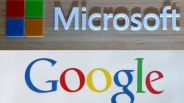As NASA's Curiosity rover racks up its third year of exploring Mars, the space agency is debuting two online tools that will let the public take part in exploring the Red Planet.
The tools, from the agency's Jet Propulsion Laboratory in Pasadena, Calif., will make use of images captured by Curiosity in addition to data from 50 years of NASA robotic missions and explorations of Mars.
One tool, Mars Trek, is a free Web-based app providing high-quality visualizations of the planet, gathered from those decades of Mars missions, to allow astronomers, students and citizen scientists to study surface features of the Red Planet.
"This tool has opened my eyes as to how we should first approach roaming on another world, and now the public can join in on the fun," says Jim Green, director of NASA's Planetary Science Division.
Interactive maps and analysis tools will allow visitors to the site to examine and make measurements of surface features of Mars. They will be able to use standard keyboard controls common in computer games to maneuver across the planet's surface.
NASA scientists are already utilizing Mars Trek to help select candidate landing sites for the agency's Mars 2020 rover mission, and say they plan to also use it to analyze and select candidate sites for manned missions to the planet in the 2030s.
"Our robotic scientific explorers are paving the way, making great progress on the journey to Mars," says Green. "Together, humans and robots will pioneer Mars and the solar system."
A second online offering, Experience Curiosity, will allow users to join the Curiosity rover in a virtual journey of exploration.
Using actual data from Curiosity and the Mars Reconnaissance Orbiter circling above, the website offers a 3D simulation of Mars, letting visitors ride along with the rover for a firsthand experience of its journey across the plains, mountains and craters of Mars.
Users will be able to manipulate the virtual rover's tools and view Mars through its cameras.
"We've done a lot of heavy 3D processing to make Experience Curiosity work in a browser," says Kevin Hussey, manager of the Visualization Applications and Development group at JPL. "Anybody with access to the Web can take a journey to Mars."
ⓒ 2025 TECHTIMES.com All rights reserved. Do not reproduce without permission.




